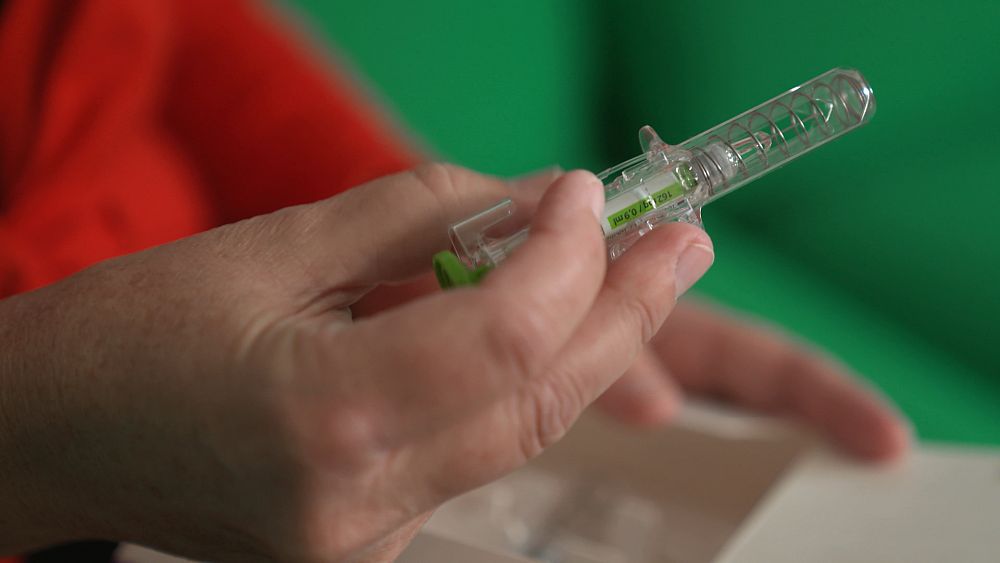The European Commission’s pharmaceutical reform will improve access to cheaper biosimilar medicines and speed up time to market.
Connie Ziegler was diagnosed with rheumatoid arthritis when she was a child.
“When I was about one and a half years old, my parents said that my knees in particular started to hurt. I didn’t want to walk far and started to feel pain. Not long after that, I showed the first symptoms . was diagnosed with juvenile rheumatoid arthritis”
She began treating her condition in her twenties. Then, about ten years ago, doctors advised them to change her regular medication to biosimilar drugs.
Biosimilars are biological drugs that are copies of an approved reference drug, although they are cheaper to produce and more affordable for patients and health systems.
We went to find out what they were.
What are biosimilars?
The European Medicines Agency defines a biosimilar as “a biologic medicine is very similar to another biologic medicine approved in the EU (so-called ‘reference medicine’) in terms of structure, biological activity and efficacy, safety and immunogenicity ( intrinsic ability of proteins and other biological drugs to induce an immune response).”
They are similar to named drugs (reference drugs) because they both contain biological material in their composition (such as bacteria, yeast or proteins), although biosimilar drugs will have some variations in their active ingredients compared to branded drugs. . This is due to the biological nature of the drug. Biosimilars are not the same as ‘generic’ versions of biological drugs because they are exact chemically based copies of the branded drug.
However, Biosimilars are still subject to strict EU testing and approval before entering the market. They are evaluated by the EMA’s scientific committee, which reviews the majority of marketing authorization applications for biosimilar medicines. These medicines are assessed against the same standards of pharmaceutical quality, safety and efficacy that apply to all biological medicines approved in the EU.
When are they used?
Biologics and biosimilars provide treatment options for patients with chronic and often disabling diseases such as diabetes, autoimmune diseases, and cancer.
“During different stages of my life, it took me a lot of time to find the right medicine for me. So I was worried when I was told I would be switching to a biosimilar, would it work well?”Connie Ziegler explains. “I need to address this with my doctor.But I also thought, they wouldn’t have given it to me if it wasn’t okay. So of course I was willing to try it. There’s another package, and it looks a little different. But for me, I haven’t had any changes in the way I’m treated or the things I feel.“
Like Connie, thousands of Danish patients have successfully transitioned to biosimilars over the years. Denmark is a leader in their use. The country also has a good tradition of monitoring its patients.
Biosimilars in the EU
The EMA authorized the first biosimilar in 2006. Since then, 105 have been approved in the European Union.
Other candidates are being closely monitored, said EMA Chief Medical Officer Steffen Thirstrup.
“What we are looking for here is to reassure (the public) that the manufacturer can produce these products consistently and safely. That they deliver what they promised to produce and that they have demonstrated that the product, from a molecular basis, is similar to the reference product. Some critics and some skeptics of biosimilars would argue that the standard is lower. But that is absolutely not true. We will set similar standards independently for the drugs we are handling. When generics were introduced 30 or 40 years ago, we had similar concerns. Sometimes there are rumors that generic drugs are cheaper and of lower quality. And that’s not right“.
Impact of biosimilars
Therefore, as soon as biosimilar drugs became available, experts began to study their impact. Senior Consultant in Rheumatology, Bente Glintborg was involved in some of that research.
“When biosimilars come on the market, it’s pretty clear that we have to look at this data prospectively: Say, okay, these patients they switched from one drug to another. . So how are the patient outcomes, how effective is the drug use, are they the same?” she explained.
She and her team investigated the outcomes of more than 1,000 patients who switched to biosimilars compared with the initial group treated with the reference drug the previous year.
“The results are very similar. We can hardly untangle the lines. That illustrates to us that the patient’s system has accepted the switch to a biosimilar and they have similar outcomes as they did on the original drug,” she added.
Acknowledging these breakthroughs, the European Commission’s pharmaceutical reform wants to improve the availability of biologics and generic medicines to ensure that more patients can access affordable medicines more affordable.
According to the European Commission, the revised incentives will allow biosimilar products to enter the market up to two years earlier than today.
From the Netherlands, the European Medicines Agency will continue to play an important role at the advisory and regulatory level.
#Biosimilars #cheaper #effective #alternative #brandname #drugs
Image Source : www.euronews.com

